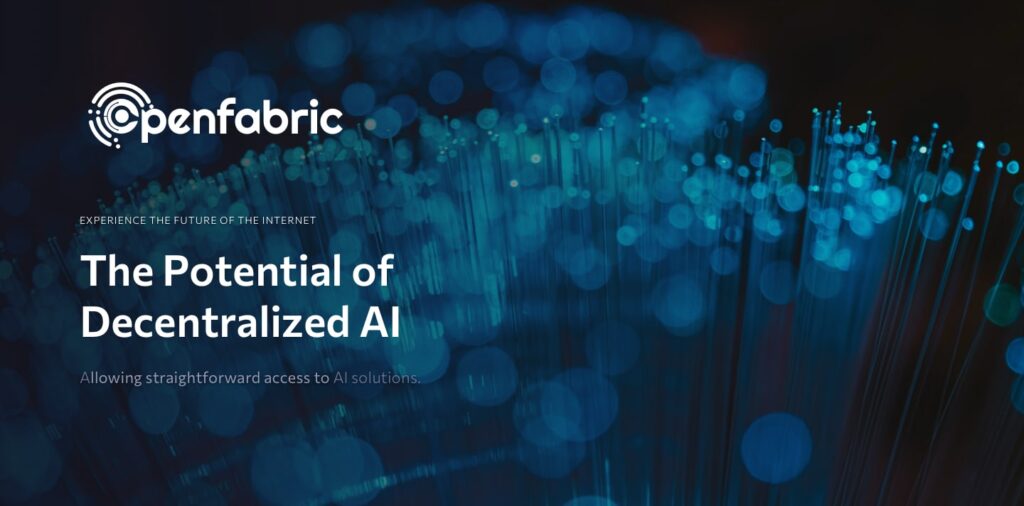
October 15, 2021 5 minutes read
The Potential of Decentralized AI

We are in the midst of a 4th Industrial Revolution that is unravelling in an Information Age. Human capital was mainly characterized into goods and services in the past. Now, it undergoes a more complex path involving data. Decentralized AI platforms have these complex path.
There are multiple vectors of data influencing the process and resulting outcome. They range from making a purchasing decision to walking out of a store (physically or virtually). The very basic formulas of commerce are much more complex and the datasets used for decision-making are much richer today than they were even a few years ago.
Data exists across complex interlinked systems, with varying storage, computational, and analytical needs. Artificial Intelligence (AI), demonstrated by machines, is where we can start to leverage technological advancements in order to coordinate, sequence, control, and interconnect systems. Most innovations to date take the form of localized AI, which can lead to General AI given the right ecosystem of collaboration. AI grew from the foundations of a mechanical bedrock of machines that were first used on the factory floor, and then grew into the cyber domain of processing.
We are transitioning towards a society in which intelligence is a governing factor and a value-added product/service. From AI developers, academic institutions, and corporations to government initiatives and more, innovation in the AI space is taking place at a breathtaking pace.
These growing development and innovation has unfortunately not been utilized fully. This is mainly because of the narrow nature of how Big Tech and well-funded start-ups set their direction. They create siloed solutions for the marketplace.
These companies provide solutions solely focused on their niche product-market-fit. By doing so, larger centralized systems inherently limit AI innovation and optimal development. Furthermore, centralized models of AI lacks an environment that would foster its evolution and mass adoption.
The Case for Decentralization
Openfabric is leveraging blockchain technology with decentralized AI model. This encompasses four key stakeholders;
- AI Innovators
- Service Consumers
- Data Providers
- Infrastructure Providers
Data and Infrastructure Providers are crucial for the development of AI. This is because they provide data for training, re-training, and execution. Infrastructure, on the other hand, allows for scalability and resource provision.
AI usually deals with massive amounts of data, as well as enterprise-grade computing and analytical requirements. This is where decentralization in Blockchain technology (Distributed Ledger Technology) offers a game-changing infrastructure.
You can harvest encrypted data securely in large amounts with a decentralized platform. With an additional homomorphic encryption, there is no need to decrypt the data first. Afterwards, you can log AI-based algorithmic processing on the blockchain itself. This simultaneously solves data storage, processing, and provenance needs for unleashing the potential of AI.
Decentralized AI as the Solution
Instead of the constraints of an isolated, rigid, and centralized models of AI system, decentralized AI provides:
- Robust governance
- Scalable storage
- Lower-cost and efficient execution
- Data provenance, personal data protection, and ownership
- A trustless ecosystem
The above are vital to the advancement of AI projects. However, there are a few more important needs, such as a collaborative innovative environment, an incentivized marketplace, and interoperability between AI agents for new developments to take place at a rapid, industry-changing pace. This is because it is the wider community of innovators, academics, and small businesses who drive innovation.
Currently, the siloed nature of progress centered around large, centralized AI companies is the bottleneck. Decentralized AI, opens up a vast swath of options on how the architecture of the future will be built.
By creating open source AI models, OpenFabric AI crystalizes this approach by:
- Leveraging Smart Economy concepts
- Incentivizing data providers, AI innovators, and Infrastructure Providers in the supply and demand of AI services.
This commodification of access to AI – leveraging blockchain technology as an access layer – allows the community to function as a cradle of innovation. This helps the secure IP and stimulate fair competition between all participants. Service Consumers also inherently benefit from this architectural design. Therefore, they can now leverage a collaborative environment with seamless interoperability of sophisticated complex AI agents.
AI at the Edge
While the blockchain allows for the flow of encrypted data to take place on the public ledger, it does not resolve the issue of necessary safeguards on data in terms of jurisdiction, geography, and ownership. Many organizations, for instance, possess valuable data but lack the means to leverage AI in a way that is more impactful or beneficial, both to them and to others.
Generally speaking, objections to data sharing fall under three distinct categories:
- Limited data access due to legal and privacy reasons.
- Reluctance to share proprietary data with the competition.
- Privacy regulations mandated on governments and businesses.
This is where Decentralized AI projects once again offers us a breakthrough. As we move forward, we are seeing more alternative practices emerging in the form of “AI at the Edge”. This is where machine learning and algorithmic processing takes place “near” the Service Consumer, such as at a local data hub behind a firewall, effectively removing the need for data to be sent, unencrypted, analyzed, and reported on. As stated previously, AI projects requires vast amounts of data to train and execute, and this problem is resolved by transparently securing and maintaining data on the blockchain.
From there onwards, AI at the Edge adds the final touch by opening up three distinct routes for development:
- Local learning: tamper proof method of training of AI models locally.
- Federated learning: Globally trained AI models are optimized and retrained locally without data transfer.
- Cooperative learning: Local data contributes to a global AI network continually.
By allowing open source AI models to train and execute in protected proprietary data environments, we allow for the collaboration of suppliers and consumers in a mutually beneficial manner. The three approaches above allow for an evolving algorithmic balance to be established between individual privacy, resources, and the model’s complexity and size needs for the task at hand.
Conclusion
The Innovation Engine that OpenFabric AI champions as the converging point for all key stakeholders allows for the continuous growth of the AI ecosystem leading to an authentic Internet of AI (IoAI). Decentralized AI’s ultimate potential is the facilitation of seamlessly interoperable AI agents to collaborate in an incentivized Smart Marketplace with reduced risk.
To learn more, visit us at www.openfabric.ai

